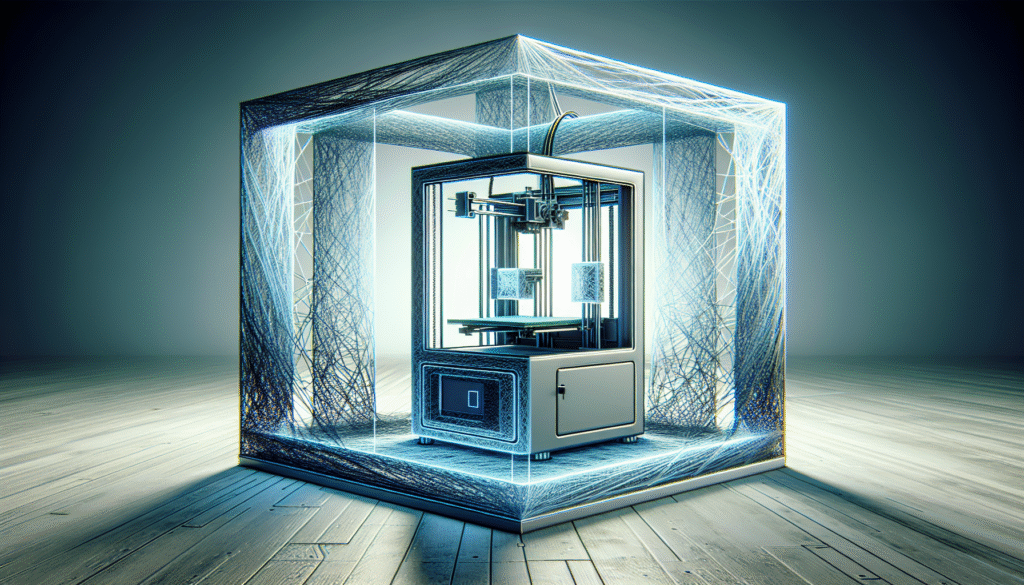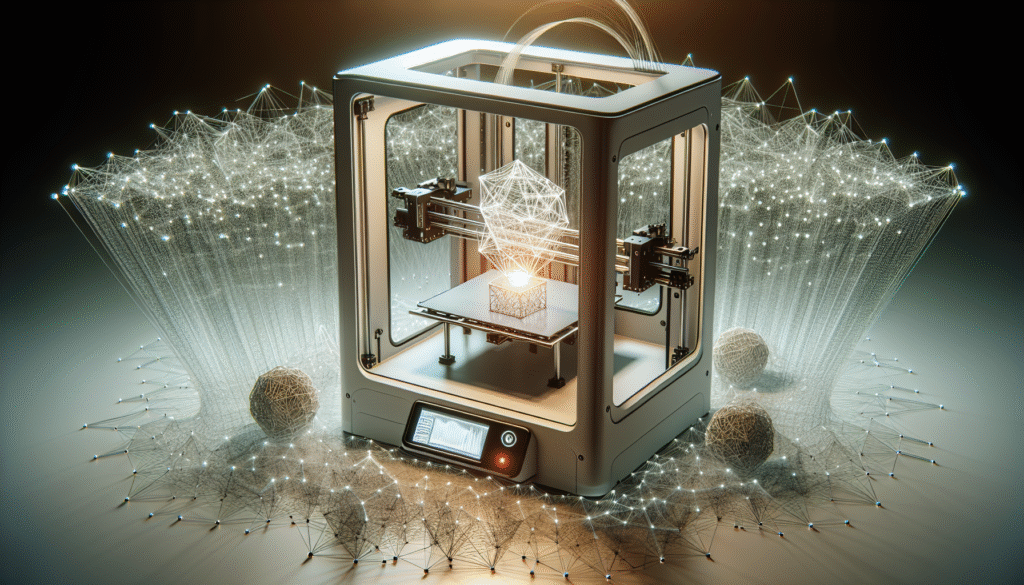Have you ever imagined a world where every object you conceive could be instantly brought to life at the push of a button? With IoT-enabled 3D printers, this isn’t just a dream—it’s swiftly becoming a reality. Whether you’re manufacturing parts for spacecraft or designing a custom piece of jewelry, the intersection of IoT technology and 3D printing is revolutionizing how we create and interact with objects in our everyday lives. As we journey into this smart manufacturing realm, let’s unpack how these connected devices are reshaping industries and stirring our imaginations.

What is IoT and How Does it Complement 3D Printing?
Imagine having a digital assistant that not only helps organize your schedule but also seamlessly transforms digital designs into physical products. That’s the role IoT plays in 3D printing. IoT, or the Internet of Things, refers to a network of physical objects connected to the internet, collecting and exchanging data constantly. When applied to 3D printing, IoT enhances efficiency, control, and integration into broader intelligent systems.
IoT: Bringing Connectivity to the Physical World
IoT is essentially about connecting devices to each other and to larger networks. With billions of devices interconnected, an IoT system allows for real-time tracking, remote control, and instant data sharing. This connectivity makes our lives smarter and more efficient, whether we’re controlling home appliances or managing industrial machines.
The Magic of 3D Printing in Today’s World
3D printing, or additive manufacturing, builds three-dimensional objects layer by layer, based on digital models. From rapid prototyping to mass customization, its applications are vast. It’s like having a mini-factory at your fingertips, turning digital designs into tangible items with impressive precision.
The Synergy of IoT and 3D Printing
The marriage of IoT with 3D printing creates a powerful synergy. IoT technology enables 3D printers to operate more autonomously and effectively, providing deeper insights and greater control over the manufacturing process. Connected printers can communicate with other devices, enabling intelligent decision-making and troubleshooting without human intervention.
The Benefits of IoT-Enabled 3D Printing
The integration of IoT into 3D printing doesn’t just sound futuristic—it brings tangible benefits. Let’s delve into how this tech combo enhances production.
Enhanced Monitoring and Maintenance
By gathering real-time data, IoT-enabled 3D printers provide insights into machine health, usage patterns, and potential issues before they become major problems. This proactive maintenance can lead to significant cost savings and reduced downtime.
Efficient Resource Management
With detailed data analytics, businesses can optimize resource use. IoT can track material consumption, providing precise inventories and ensuring sales and production stay in harmony, reducing waste and enhancing sustainability.
Remote Management and Control
Imagine controlling your 3D printer from anywhere in the world. IoT facilitates remote management, allowing you to start or stop prints, adjust settings, and monitor progress without being physically present. This flexibility is ideal for managing production from multiple locations.
Improved Quality and Traceability
Production insights derived from IoT data allow for meticulous quality control. By tracing the production history and parameters of each component, manufacturers can ensure each part meets stringent standards, enhancing overall product reliability.

Real-World Applications of IoT-Enabled 3D Printers
How is this technology shaping our world? Let’s uncover some captivating examples.
Healthcare Innovations
In hospitals, IoT-enabled 3D printers are crafting custom prosthetics and implants tailored to the unique physiology of each patient. By connecting to patient records, these printers can create precise implants, ensuring better fit and functionality.
Aerospace Advancements
Aerospace is a field that demands precision and reliability. Here, IoT-enabled printers produce flight-critical components with real-time quality checks. Data sharing between design software and printers ensures each part meets exact specifications, crucial for keeping aircraft safe and efficient.
Custom Consumer Goods
From fashion to footwear, IoT-enhanced 3D printing allows for bespoke designs. Consumers can customize products to their liking, reflecting personal taste and requirements, while businesses track and manage the production process intelligently.
Smart Manufacturing on the Factory Floor
IoT-enabled 3D printers fit seamlessly into smart factories, where automation is key. These printers communicate with other machines in an orchestrated dance of efficiency, optimizing workflows, sharing data, and adapting to changes on-the-fly.
Educational Devices
Schools and universities use IoT-enabled 3D printers to encourage hands-on learning. These devices serve as educational tools, offering students practical experience with design and engineering principles while connecting to cloud-based learning platforms.
Challenges and Considerations
As wondrous as IoT-enabled 3D printing sounds, it’s not without its challenges. Let’s explore the obstacles and learn how the industry is overcoming them.
Data Security Concerns
With great connectivity comes great responsibility. IoT-enabled systems are vulnerable to cyber threats, necessitating stringent cybersecurity measures. Ensuring data protection is vital to safeguard intellectual property and sensitive production information.
Technical Complexities
Integrating IoT and 3D printing systems can be technically challenging, requiring skilled personnel for setup and maintenance. Companies must invest in training and infrastructure to maximize the benefits of this integration.
Cost Implications
While the initial setup for IoT-enabled 3D printing may be expensive, the long-term savings and efficiencies often justify the investment. Businesses need to perform cost-benefit analyses to make informed decisions about adopting this technology.
The Future of IoT-Enabled 3D Printing
What’s on the horizon for this groundbreaking technology?
Continued Market Growth
The market for IoT-enabled 3D printing is expected to grow exponentially as more industries recognize its potential. New applications and innovations will continue to emerge, pushing the boundaries of what’s possible.
Advancements in AI Integration
Combining AI with IoT and 3D printing opens new possibilities for smart manufacturing. AI can further enhance the automation and decision-making capabilities of IoT systems, driving innovation and efficiency.
Expansion of Material Choices
As research advances, we can expect a wider variety of materials suitable for 3D printing. From metals to biodegradable polymers, enhanced material options will expand the scope of application for IoT-enabled printers.
Sustainable Manufacturing Practices
IoT-enabled 3D printing supports sustainable manufacturing by reducing waste and optimizing resources. As environmental concerns continue to grow, these practices will become critical to meeting global sustainability goals.
Conclusion
The fusion of IoT and 3D printing ushers in a new era of smart manufacturing, characterized by unparalleled customization, automation, and efficiency. As we unlock the potential of these connected devices, industries are transformed, and new possibilities appear before us. By continuing to adapt and innovate, we move closer to a future where creativity and practicality converge in remarkable ways. Is there truly a limit to what we can achieve with IoT-enabled 3D printers? It seems only time will tell, but the path forward is certainly thrilling.


